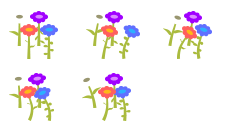Rise was an adventure game that I built in art school.
In the course we were tasked with creating a work that expressed a narrative in some form. Many of the other students were working with traditional mediums, but because I'm a punk, I decided that I would make a game instead. Since digital media was my focus it made sense for me to make something digital. Having played and made games throughout my childhood, the idea of making a game was something that I was interested in doing as a form of creative expression which the audience can interact with at their leisure. Of all of the students taking the course I was the only male. My lecturer Barbara was supportive of the idea of doing a game, although one of the other students Mia raised a concern that "in games you just collect coins." I initially found this to be the case after art school.
I had just been playing the games "Life is Strange" and "Fez," which lead me to making an adventure game that plays on the issue of misogyny in video games. The creator of "Fez" had taken a feminist stance on social media and was receiving death threats from gamers which lead him to decide to stop making games (gamergate). In my game from the start the princess loses her status as her guards abandon her, and then she meets a fox who makes light of her situation. In essence the narrative is a contemporary alternative to the usual setting of Robinhood. With the game I wanted to explore issues such as "white knight syndrome" juxtaposed with micro-aggressions but in an awkward and light-hearted kind of way. I was creating a satire about feminism and sexism. Throughout the course of the game the princess regains the throne by claiming it rather than being given it. This was all my curiosity exploring the issues and at no point was I gritting my teeth. Reconsidering the issue we can ask ourselves, "are games targeted at women sexist because they are often casual?" — because they were.
With the intent of Rise being an adventure game in which conversations with characters and decisions made would influence the narrative, it needed a branching dialogue system that would make it simple enough to tell a compelling story. Fortunately I was building the game using software called "Unity," which had a third-party branching dialogue designer extension. The tool basically let you connect bits of text with other bits of text and game events by connecting nodes.
For the game controls of the actual character there were numerous tutorials online in C# with working code that was nearly copy-pastable. Similarly, the character animation required animating a walk cycle, which I created in Illustrator and After Effects using an online walk cycle diagram as a guide. Each animation frame was placed in a sprite sheet. With the graphics I tried to emulate "Fez" and "Zelda the Minish Cap" to create a nice cute handheld game aesthetic. There were also strong influences from creatives who were making waves at the time on Dribbble and Tumblr.


Some other creatives have created quite impressive games. Lucid Heist (unaffiliated) is about an artist called Mia who faces artist blocks and commits art heists. There's also Wayfinder (unaffiliated), which is a whimsical exploration game about poetry and nature. And also Foxtrot (unaffiliated), a tech demo where you talk to a fox. Despite not having met the other creatives, it is interesting to see that we do have some similar ideas.